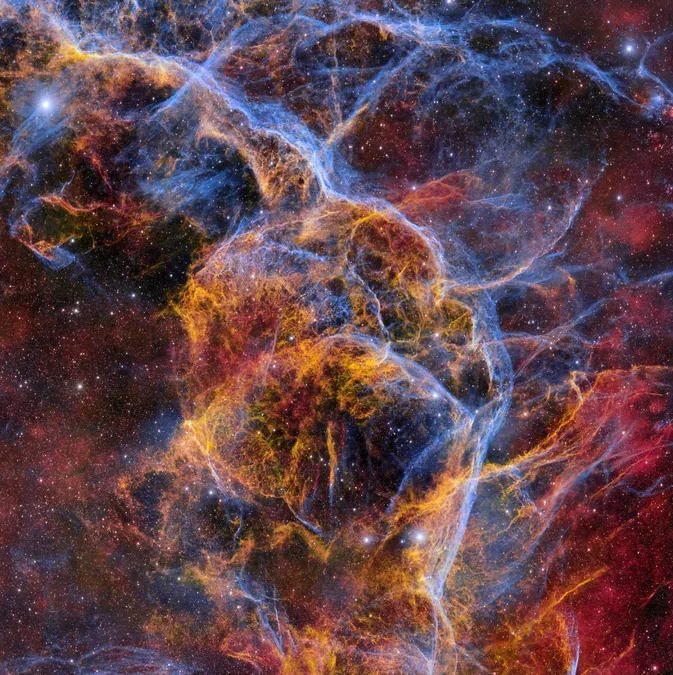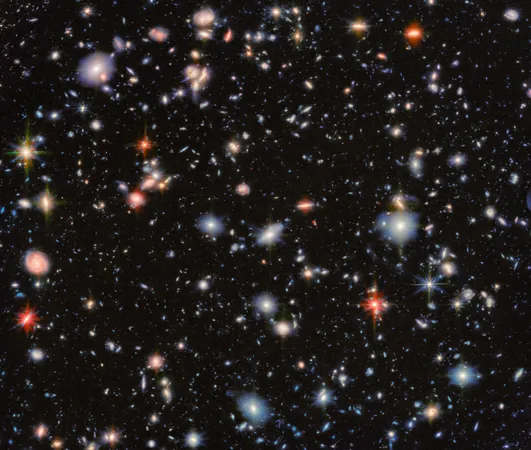
Could Supernovae Trigger Earth’s Next Climate Catastrophe?
2025-06-11
Author: Mei
Epic Cosmic Explosions—The Key to Past Climate Swings?
Imagine a star exploding in space, sending a shockwave of high-energy particles racing across the cosmos. This is not just a spectacular sight; these supernovae may hold the secrets to dramatic climate shifts in Earth’s history, as posited by INSTAAR senior research associate Robert Brakenridge in a groundbreaking new study.
Linking Cosmic Events to Climate Chaos
In his recently published paper in the *Monthly Notices of the Royal Astronomical Society*, Brakenridge suggests that these massive explosions could drastically alter Earth’s atmosphere, resulting in rapid climate changes. By meticulously analyzing geologic records, he correlates significant environmental shifts with known supernova events.
"We see these abrupt changes in Earth's environmental history; the real question is: what triggered them?" he remarked, emphasizing the necessity of understanding potential future impacts.
Future Threats from the Cosmos
Brakenridge warns that if nearby supernovae did cause past environmental upheavals, similar events could dramatically affect humanity in the future. "The fallout from such cosmic explosions might yield significant consequences for human society," he cautioned, underscoring the urgency of the research.
Groundbreaking Research—From Telescopes to Tree Rings
While previous studies on this phenomenon remained largely theoretical, Brakenridge is now bridging the gap between theory and observable data. Utilizing advanced orbital telescopes, he has crafted a detailed model showcasing how supernova radiation interacts with Earth’s atmosphere.
This model reveals that supernovae could thin the ozone layer and degrade atmospheric methane, leading to a cascade of ecological consequences: reduced greenhouse warming, intensified ultraviolet radiation exposure, animal extinctions, and even increased wildfires.
Tree Rings as Time Capsules
To lend credence to his theory, Brakenridge delved into an impressive 15,000 years of tree ring data, uncovering 11 spikes in radioactive carbon that might correspond with supernova events. "The timing and intensity align perfectly with what we observe on Earth," he affirmed.
The Race Against Time
Currently, supernovae remain one of several potential explanations for these climate phenomena, with solar flares being a leading contender. Nevertheless, Brakenridge feels his evidence is compelling and stresses the importance of continued research. Identifying how supernovae can reshape our atmosphere could be crucial as humanity braves imminent climate shifts.
Astronomers have their eyes on Betelgeuse, a massive star in Orion poised for a supernova explosion within the next 100,000 years. "As we deepen our understanding of stars in our vicinity, our ability to predict these cosmic events strengthens," Brakenridge concluded. With more observations and modeling, we may better prepare for the environmental upheavals that could emerge from the stars.



 Brasil (PT)
Brasil (PT)
 Canada (EN)
Canada (EN)
 Chile (ES)
Chile (ES)
 Česko (CS)
Česko (CS)
 대한민국 (KO)
대한민국 (KO)
 España (ES)
España (ES)
 France (FR)
France (FR)
 Hong Kong (EN)
Hong Kong (EN)
 Italia (IT)
Italia (IT)
 日本 (JA)
日本 (JA)
 Magyarország (HU)
Magyarország (HU)
 Norge (NO)
Norge (NO)
 Polska (PL)
Polska (PL)
 Schweiz (DE)
Schweiz (DE)
 Singapore (EN)
Singapore (EN)
 Sverige (SV)
Sverige (SV)
 Suomi (FI)
Suomi (FI)
 Türkiye (TR)
Türkiye (TR)
 الإمارات العربية المتحدة (AR)
الإمارات العربية المتحدة (AR)